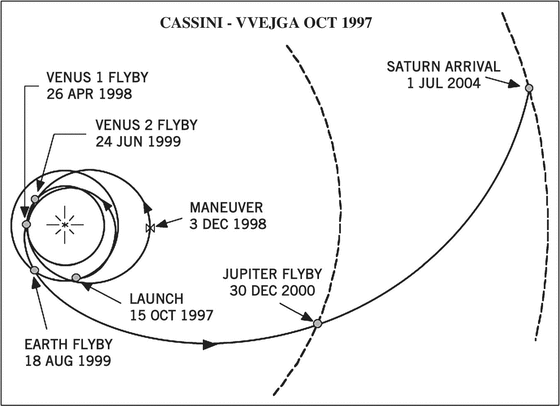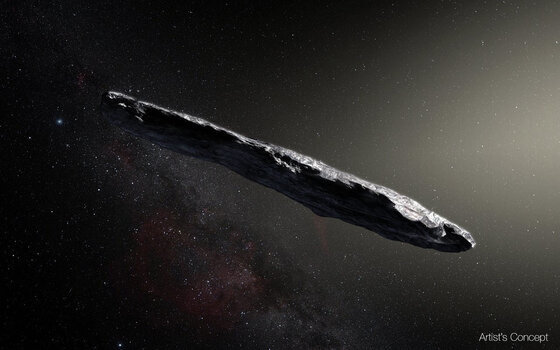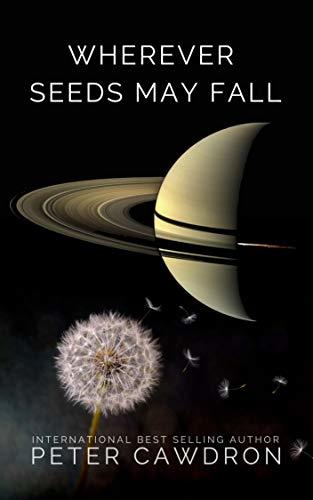
It seems unlikely to me that anyone, anywhere, has thought longer or harder about First Contact than Peter Cawdron. In his fifteenth novel on the theme, the gifted Australian science fiction author poses yet one more solution to the Fermi Paradox. “In the summer of 1950,” Cawdron explains, “while sitting around a table having lunch, physicist Enrico Fermi casually asked his colleagues, ‘Where is everyone?‘ . . . He understood that, given the sheer size of the universe, there should be other intelligent species out there . . . so where were they?” In Wherever Seeds May Fall, Cawdron offers up a novel explanation for The Great Silence that’s sure to surprise. Get ready for humankind’s first encounter with extraterrestrial life.
The setup
Wherever Seeds May Fall opens in the near future as a newly discovered comet heads deeper into the solar system from Saturn on its way to Jupiter. There, the object named Comet Anduru—the word in Sinhalese loosely translates as “The Dark Prince”—is expected to crash into the clouds of Jupiter much as did Comet Shoemaker-Levy 9 in July 1994. But Anduru instead glances off the outer atmosphere of the gas giant and speeds, somewhat more slowly, toward the inner solar system—and Earth.
Wherever Seeds May Fall (First Contact #15) by Peter Cawdron (2021) 517 pages ★★★★★

As astronomers are well aware, NASA frequently uses the Venus-Venus-Earth-Jupiter Gravity Assist (VVEJGA) to conserve fuel and increase the velocity of spacecraft on their way to the gas giants. It’s clear that Anduru is reversing the process, slowing down on its way to Earth using the gravitational attraction of several other planets along the way. Within months, then, humanity’s first encounter with extraterrestrial life will be a reality.
The protagonists
Although the cast of characters is large and includes the President of the United States, Wherever Seeds May Fall centers around two people.
- Newly promoted Lieutenant Colonel Nolan Landis of the US Air Force holds down a desk job near the space force installation at Cheyenne Mountain in Colorado. There, he and his team think the unthinkable about potential existential threats to the United States and to humanity at large.
- Dr. Kathleen (Kath) McKenzie is an astronomer at NASA’s Ames Astrophysics Laboratory. Gregarious and a gifted communicator, she maintains contact online with a global team of other scientists engaged in astrophysics and astronomy.
Col. Landis and Dr. McKenzie are among the very first people on Earth to suspect that Comet Anduru is an alien vessel. And they are called upon by the American government to help plan and manage the response to Anduru as the time of the comet’s arrival grows ever nearer.
The consequences
The approach of Comet Anduru triggers waves of hysteria all across the earth.
- In all the major powers—China, Russia, the US—the military begins preparations for an alien invasion. The reigning assumption is that Anduru represents a hostile extraterrestrial force. One country after another gears up to wield nuclear weapons against the intruder.
- While riots and looting begin erupting, self-appointed online pundits unleash a torrent of conspiracy theories through social media, stirring up new waves of hysteria.
- Meanwhile, the scientists who possess the most accurate and up-to-date information about Anduru begin mobilizing to calm the public, insisting that it is extremely unlikely an extraterrestrial visitor traveling for hundreds or thousands of years will have come to invade Earth.
The action
Long before Anduru’s arrival, Col. Landis and Dr. McKenzie are drawn into the inner circle of those in the White House who are planning the American response to the visitor. And they are on the front lines when it comes time for the first encounter with extraterrestrial life by the human race.

For further reading
Cawdron’s sequel to this novel is Generation of Vipers – First Contact #19 (A compelling new alien invasion novel).
This is one of the novels in Peter Cawdron’s insightful First Contact book series.
For more good reading, check out:
- The five best First Contact novels
- The ultimate guide to the all-time best science fiction novels
- Great sci-fi novels reviewed: my top 10 (plus 100 runners-up)
- Seven new science fiction authors worth reading
- The top 10 dystopian novels reviewed here (plus dozens of others)
And you can always find my most popular reviews, and the most recent ones, plus a guide to this whole site, on the Home Page.




























Had to put the book down. Won’t be finishing. Too much political messaging. Not cool. seemed like a good storyline too…..except it was like a smarter version of AOC was the author…haha!! I told all my scifi reading buddies not to bother with the book
The “political messaging,” as you call it, was the book’s biggest attraction. The philosophy of “The Spectacle” is a fresh and compelling lens through which to view the contemporary world as a whole and deserves much wider attention.